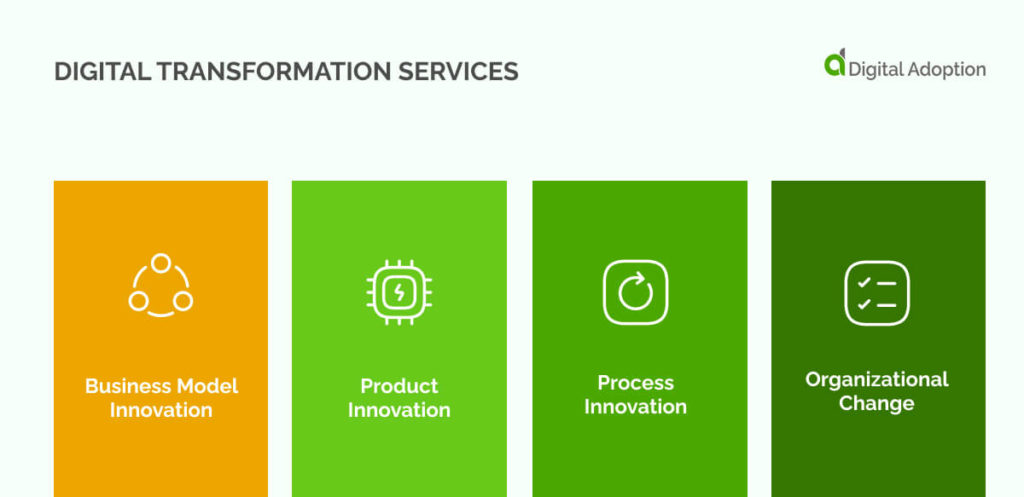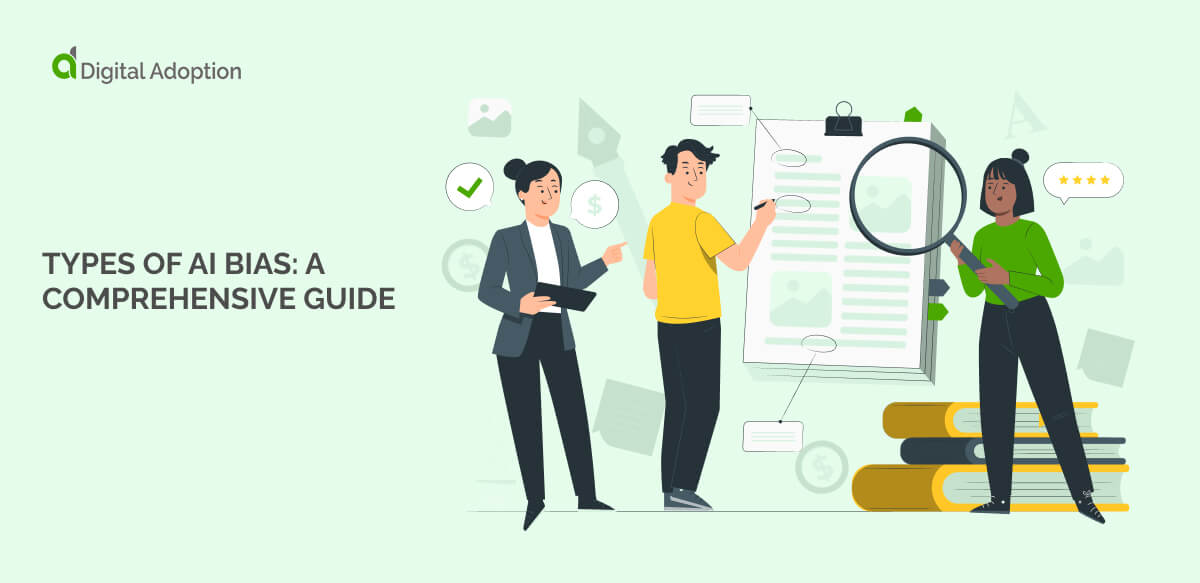What are the 4 main areas of digital transformation?
That depends on who you ask…
In this article, we’ll look at a number of resources that provide a wealth of ideas and perspectives on digital transformation.
Digital transformation meaning refers to implementing digital technologies to unlock the total value of your digital technologies. The four primary areas of digital transformation are:
- Customer Experience (CX)
- Data & Analytics
- Cloud Computing
- Mobility
To achieve these goals, there needs to be a change in mindset within the entire organization. It’s not enough to hire people who know how to use digital technology; you also need to train them to work together as a team.
In addition, the company needs to understand its customers better to provide a better experience. They should also collect customer data to determine which products or services best meet their needs.
Finally, enterprises need to embrace mobility because most employees use smartphones and tablets to access information. If they don’t, they risk losing out on business.
What Are the 4 Main Areas of Digital Transformation?
Some experts and thought leaders advocate models that focus on 4 main areas of digital transformation.
Others follow models that emphasize anywhere from 3 to 9 areas…
So what is the best model to follow?
And who should you listen to?
It’s best to review the answers yourself and come to your own conclusion.
Here are a few of the many perspectives on digital transformation – and digital transformation strategy – that you can find online.
The 4 Key Areas in Digital Transformation, According to Microsoft
According to Microsoft CEO Satya Nadella, CEOs should focus on these areas in digital transformation:
- Empowering employees. As change managers know, employee motivation and skills are critical for organizational transformations – including digital transformations – to succeed.
- Engaging customers. Customer engagement matters just as much as employee engagement, which means businesses must meet the evolving expectations of today’s customers.
- Optimize operations. IT infrastructure modernization one of the best ways that digital transformation can help improve organizational effectiveness and efficiency.
- Services and products. Innovation is one of the best ways to fuel success in the modern age, helping organizations improve their market position, capture more revenue, and stay relevant.
With the right strategy, approach, and execution, an organization can change the way it operates and delivers value to customers and stakeholders.

The 4 Main Areas of Digital Transformation, According to Association Success
According to an article on AssociationSuccess.org, a leadership development and consulting firm, businesses should have 4 specific focal points when designing a digital transformation plan:
- A strategic focus that aligns the digital transformation effort with the organization’s overall strategy
- A customer focus that helps the organization create a customer experience that is consistent, unified, and modern
- A culture focus that ensures the workforce has the proper mindsets, attitudes, and behaviors to accommodate transformations
- A data focus that ensures the company can use data and analytics to make informed decisions, enhance business process transformation, and more
A digital transformation plan that emphasizes these areas will be well-rounded, helping organizations design strategies that improve internal operations, the customer experience, and the organization’s market position.
Four Areas to Consider for Developing Digital Transformation Strategies, According to Consultancy.uk
According to an article on consultancy.uk, an organization should answer a few questions when designing a digital transformation strategy:
- How can we digitally adapt organisational structures to become more digitally mature?
- How can we ensure company-wide digital governance and investments?
- What are the skills, competencies and roles required for a digital business model?
- What cultural shift is required to build a fundamental advantage over digital competitors?
Ultimately, digitalization and digital transformation marks the transition from analog to digital.
Older companies that are “analog-native” can face significant obstacles along that journey, which is why it is so important to create a robust digital transformation plan.
Four Focus Areas for Digital Transformation in Treasury Services, According to EY
When it comes to digital transformation in more specific industries – namely, treasury services – the consulting firm EY recommends focusing on:
- Streamlined onboarding. For banks, onboarding is crucial and can mean the difference between gaining and losing a customer.
- Improved insights. Accurate, current information is no longer a luxury for corporate treasury clients – it is a must.
- Enhanced client experience. Along with the rest of the digital economy, corporate treasury services must create a streamlined customer experience across all channels and services.
- Product innovation. EY agrees with Microsoft by stating that product innovation should be a central pillar in digital transformation, helping to offer unprecedented value to the end client.
In treasury services, as well as other industries, digital transformation can open up new frontiers for both banks and their customers. Adhering to the four principles covered here can ensure that banks stay modern, competitive, and digitally mature.
Four Key Areas for Digital Transformation in Procurement
According to Nic Walden, director of advisory services at The Hackett Group, businesses in the procurement industry should focus on:
- The stakeholder experience. Top performers personalize the stakeholder experience across multiple channels, look for value above and beyond savings, and segment the stakeholder community.
- Build a procurement-as-a-service portfolio. In particular, organizations should place resources globally and provide purchase-to-pay and sourcing offerings, while also rebranding to reflect these added functions.
- Analytics, data, and insight. With the right data and analytics, procurement can become more than just an “isolated, siloed” organization – it can become an advisor that offers insights and market intelligence.
- Accelerate transformation with technology. Modern and emerging technology, such as RPA and cognitive computing, can improve profitability and efficiency.
In the digital age, procurement stands to gain a great deal from digital transformation – and, given the rapid pace of change in today’s business process transformation, the sooner that they begin their journey, the better.
McKinsey four key types of digital transformation:
Digital transformation services are a set of activities that help organizations to achieve their digital goals. The term was coined by the McKinsey Global Institute in a report published in 2015. It is defined as “the process of creating new business models, products and services, processes, and organizational structures to deliver value through digital technologies.”
The concept has been widely discussed in recent years. In particular, many experts believe that digital transformation will become an important driver of growth and competitiveness in the future.

Four key types of digital transformation
- Business Model Innovation – This involves changing the way businesses operate. For example, it could include introducing new work methods, such as remote work arrangements.
- Product Innovation – This involves improving existing products and services. For example, it may include changing customer experience, product design, or marketing strategies.
- Process Innovation – This involves changing existing business processes. For example, it might include the introduction of new software systems or the development of new skills.
- Organizational Change – This involves restructuring the organization itself. For example, it includes creating new roles, departments, or divisions.
Key Takeaways
- Digital transformation is the process of adopting new technologies to improve the efficiency and effectiveness of existing processes.
- Digital transformation is about creating value through the application of digital technologies.
- Digital transformation requires a change in mindset, culture, and leadership.
- The five strategic areas of domain transformation are customers, competition, data, innovation, and value.
- Fine tuning business models is key to staying ahead of the game.
In the digital age, procurement stands to gain a great deal from digital transformation – and, given the rapid pace of change in today’s business process transformation, the sooner that they begin their journey, the better.
People Also Ask
-
What are the 4 main areas of digital transformation?The four main areas of digital transformation are: Customer Experience (CX), Data & Analytics, Cloud Computing and Mobility
-
What are the 4 main in digital transformation according to Microsoft?Empowering employees, Engaging customers, Optimize operations Services, and products













